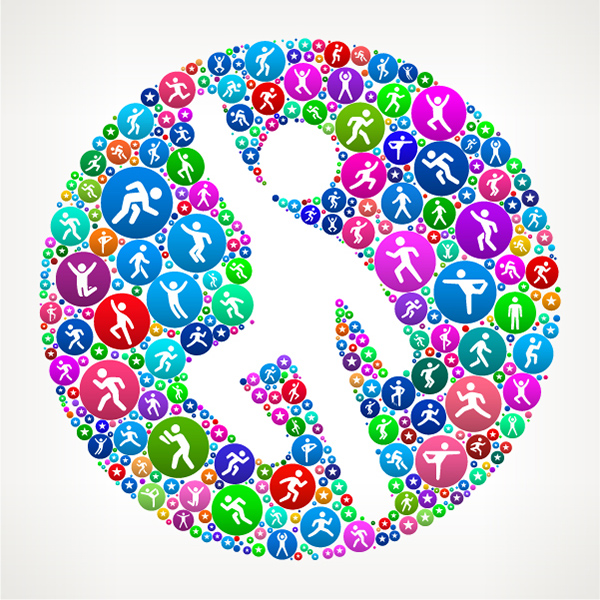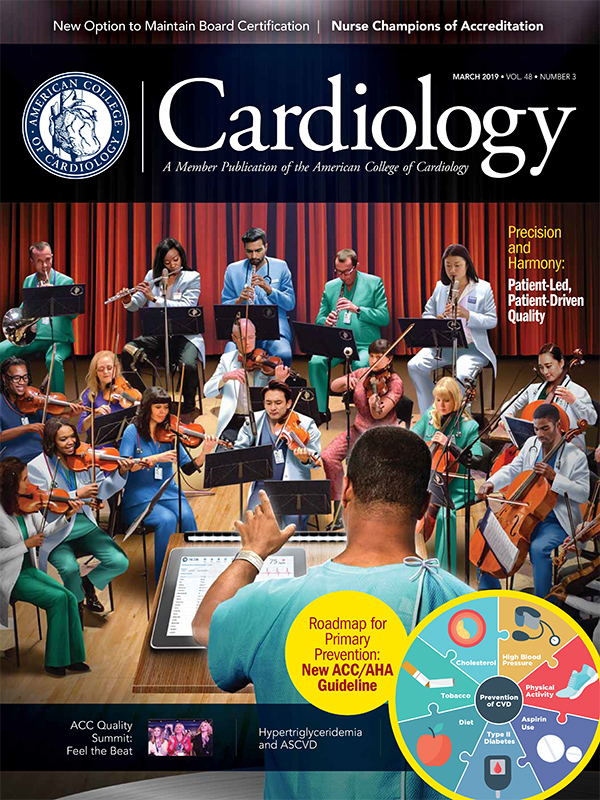Editor's Corner | Cardiomyopathy: A Look at Current Treatment

A colleague working in the publishing industry asked if I'd see his 30-year-old son for a medical evaluation. A business executive in Philadelphia, the son was in good health with no prior illness. But, some tachycardia was puzzling the primary care physician, who requested a consultation.
A quick case review revealed he was in sinus rhythm at 115 bpm, with markedly elevated JVP and a very loud third heart sound and bibasilar rales to the mid chest. An echo performed the same day showed an ejection fraction (EF) of 15 percent, a dilated left ventricle and moderate mitral regurgitation.
After a week of treatment with intravenous inotropes and oral heart failure medication, his EF rose to 25 percent and his tachycardia subsided. On subsequent evaluation, there was no evidence of coronary disease or another etiology for a dilated cardiomyopathy (DCM). For most patients with a DCM, there's no clear cause.
It's important to rule out treatable causes of cardiomyopathy. Alcohol is still a common and potentially reversible cause of cardiomyopathy. Abstinence programs are successful in reversing alcohol-related myopathy, but require long-term programs to prevent relapse. Chronic cocaine use also can cause a cardiomyopathy and some patients infected with the HIV virus can develop a cardiomyopathy with clinical heart failure.
Cancer chemotherapy is a new addition to the list of causes of acute cardiomyopathy and chronic heart failure, as the field of cardio-oncology expands. Monoclonal antibodies are finding important applications in cancer therapy, but side effects like immune-mediated acute myocarditis will require therapy from a care team that includes cardiology, hematology and immunology to manage their care.
Ventricular assist device (VAD) therapy and heart transplantation may be needed in rare cases. The common denominator is the reduced power output of the heart, because it has been compromised. A normal heart produces myocardial shortening of about 30 percent, resulting in an EF of around 60 percent. Normal coronary perfusion favors the endocardium and blood flow is about 1 ml/min/gram at rest.
No clear etiology for the onset of the myopathy may be identified in most patients. An acute myocarditis can cause residual fibrosis and persistent myocardial injury that remains unchanged for many years. Initial evaluation should include thyroid function, alcohol-related myopathy, cocaine-induced myopathy and HIV-associated myopathy.
Regardless of knowing the cause, optimal guideline-directed medical therapy (GDMT) is required. All patients should be on an angiotensin-converting enzyme inhibitor (ACEI) or an angiotensin-receptor blocker (ARB), unless there's a known contraindication. Goal systolic blood pressure should be less than 120 mm Hg. Lower blood pressure values often can be tolerated, but orthostasis needs to be avoided.
GDMT also includes combination sacubitril/valsartan therapy, a first-in-class neprilysin inhibitor/angiotensin II-receptor blocker. Neprilysin is an endopeptidase. By inhibiting neprilysin, sacubitril increases bioavailability of natriuretic peptides and bradykinin resulting in natriuretic, vasodilatatory and antiproliferative effects.
Sacubitril and valsartan in combination produce ventricular unloading and an antihypertensive response. Its use, supported by the PARADIGM-HF trial, is gaining some favor as an orally administered treatment for cardiomyopathy. The majority of cases still rely on an ACEI or ARB for initial therapy, coupled with a diuretic and a beta-blocker.
The low cost of this combination along with its ease of use and paucity of side effects provide an advantage for this combination as the first choice for the treatment of DCM. Adding spironolactone also improves outcomes in DCM patients. Sacubitril could be substituted in place of an ACEI or ARB, but the side effects and cost might eliminate any advantage. Regular evaluation of blood pressure status is essential, and this is best done by home monitoring by the patient.
Maintaining a stable cardiac status in the setting of a myopathy is challenging for both the patient and clinician. Adherence to a medication requires reminders from the patient and the practice. Smartphone apps designed to improve adherence are helpful, particularly those that have periodic voice communication. But any simple phone app that provides a reminder to the patient to take the medication is beneficial.
What about exercise in patients with cardiomyopathy? Initially it was considered a contraindication in patients with a cardiomyopathy and patients were advised to avoid exercise. However, now the norm is aerobic exercise programs tailored to the capacity of the individual patient. Medicare will support a 10-week aerobic exercise program for patients recovering from acute heart failure.
Many health systems have added formal cardiac rehabilitation programs to their health system goals. Motivation continues to be an impediment and formal supervised exercise has been shown to help provide the motivational support that is often the key to a successful program.
Moderate isometric exercise has been added to some programs, and this particularly helpful to prevent muscle wasting in the elderly. And we now see exercise programs for patients with VADs. Mild aerobic exercise will help to restore functional capacity. For patients with impaired left ventricular function, exercise is an essential part of daily life.
Alfred A. Bove, MD, PhD, MACC, is professor emeritus of medicine at Temple University School of Medicine in Philadelphia, and a former president of the ACC.
Keywords: ACC Publications, Cardiology Magazine, Antihypertensive Agents, Spironolactone, Cardiomyopathy, Dilated, Blood Pressure, Bradykinin, Cardiac Rehabilitation, Heart-Assist Devices, Diuretics, Goals, Neprilysin, Mitral Valve Insufficiency, Heart Ventricles, Endocardium, Biological Availability, Motivation, Dizziness, Physicians, Primary Care, Myocarditis, Antibodies, Monoclonal, Respiratory Sounds, Stroke Volume, Ventricular Function, Left, Heart Sounds, Aminobutyrates, Heart Failure, Tetrazoles, Adrenergic beta-Antagonists, Exercise, Angiotensin-Converting Enzyme Inhibitors, Heart Transplantation, Natriuretic Peptides, Coronary Disease, Angiotensin Receptor Antagonists, Medicare, Tachycardia, Muscular Diseases, Hematology, Recurrence, Publishing, Referral and Consultation, Exercise Therapy, HIV Infections, Nuclear Family
< Back to Listings


